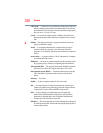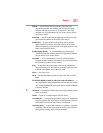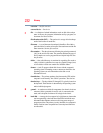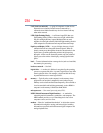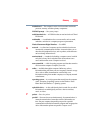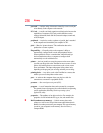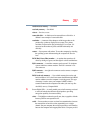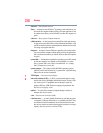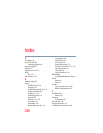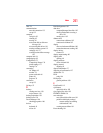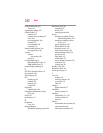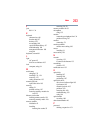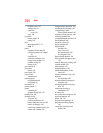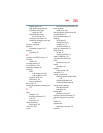
238
Glossary
shortcut — See keyboard shortcut.
Sleep — A feature of some Windows
®
operating systems that allows you
to turn off the computer without exiting your open applications and
to continue from where you left off when you turn the computer on
again.
software — See program. Compare hardware.
solid state drive —A data storage device that utilizes solid-state memory
as opposed to a hard disk (see hard disk). Much like hard disks, solid
state drives hold much more information than diskettes and are used
for storage of programs and data.
Suspend — A feature of some Windows
®
operating systems that allows
you to turn off the computer without exiting your open applications
and to continue from where you left off when you turn the computer
on again.
system disk — A diskette that contains the operating system files needed
to start the computer. Any diskette can be formatted as a system
disk. A system disk is also called a “bootable disk” or a “startup
disk.” Compare non-system disk.
system prompt — The symbol (in the MS-DOS
®
operating system,
generally a drive letter followed by a “greater than” sign) indicating
where users are to enter commands.
T
TFT display — See active-matrix display.
U
universal serial bus (USB) — USB is a serial bus that supports a data
transfer rate of up to 480 Mbps (480 million bits per second). USB
can connect up to 127 peripheral devices through a single all-
purpose USB port. USB allows hot swapping of peripherals. See
also bus, hot swapping, serial.
upload — To send a file to another computer through a modem or
network. See also download.
USB — See universal serial bus (USB).
USB Flash drive — A small, portable flash memory card that plugs into
a computer’s USB port and functions as a portable hard drive. They
are smaller and more durable than an external hard drive because
they do not contain any internal moving parts, but have less storage
capacity. See also universal serial bus (USB).



